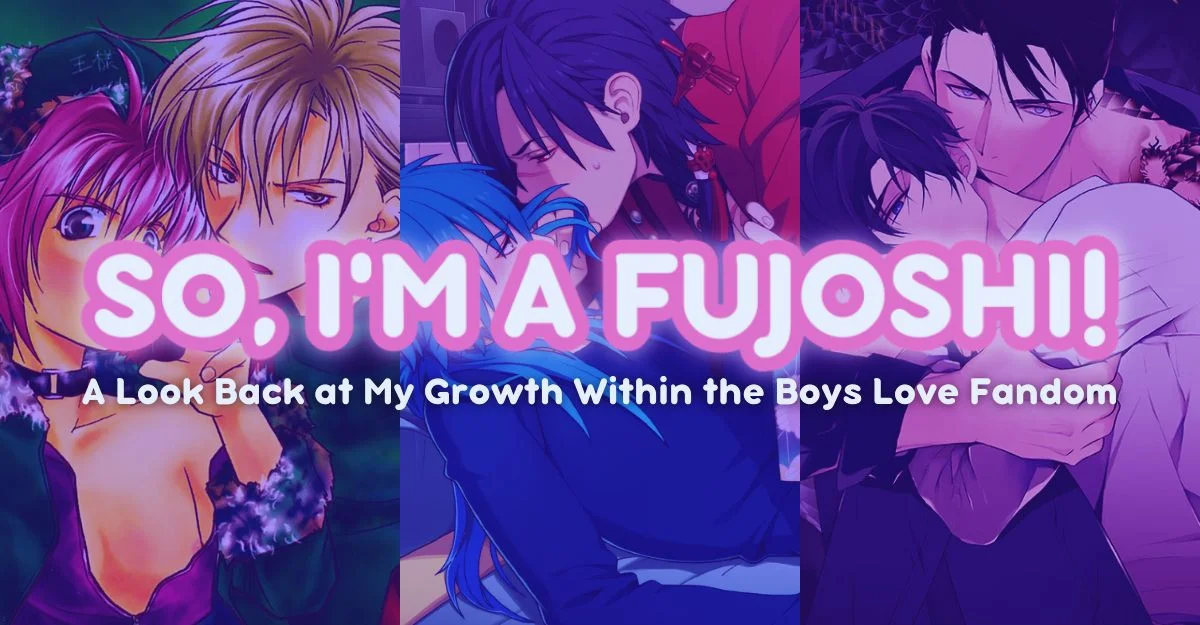Fujoshi, a term originating in Japan, refers to women who are enthusiastic about consuming Boy’s Love (BL) media, which typically depicts romantic and/or sexual relationships between men. This subculture has grown significantly in recent years, both within Japan and internationally. In this article, we’ll dive deep into the world of Fujoshi, exploring their interests, how they shape the BL genre, and what makes their community so unique.
What is a Fujoshi?
At its core, a Fujoshi (literally “rotten woman”) is a female fan who indulges in the BL genre. The term “fujoshi” is sometimes used with a playful or self-deprecating tone, but it also signifies a dedicated passion for a particular kind of storytelling.
The Origins of Fujoshi Culture
The roots of Fujoshi culture can be traced back to the 1970s in Japan, when manga and anime with homoerotic themes began to emerge. However, the term itself didn’t gain widespread use until the 1990s. Over time, Fujoshi expanded beyond manga, influencing various forms of media, including novels, fanfiction, and even video games.
The Role of Fujoshi in Popularizing BL
Fujoshi play a pivotal role in the growth of BL (Boy’s Love) as a genre. They are the primary audience and often the creators of fan works like fanfiction and fan art, which further fuel the demand for more BL content. While many assume that BL is exclusively for male fans, the truth is that women, particularly Fujoshi, have become the heart of the BL community.
Characteristics of Fujoshi and Their Fandom
Fujoshi (literally, “rotten girls”) is a Japanese term for female fans who have a great interest in Boys’ Love (BL). What distinguishes Fujoshi from mere readers of BL is that they are its enthusiastic “producers” who create secondary works such as fanfiction and fan art. However, most fandom members are female, yet Fujoshi are generally reviled as “rotten” and often portrayed in a false manner. The portrayal of Fujoshi is related to the condemnation of the genre they read. Because interests in media texts have ethical implications, moral controversy is often observed in stories. There are a number of studies on the cause of the fascination of female fans with male homoerotic romance, examining it from the perspective of Japanese girl fan culture. However, given the tendency in the field of gender and sexuality research in Japan to focus on the male perspective, the genre of Boys’ Love has received little academic study. Only a few studies have mentioned BL at all. We need new conversations that acknowledge the diversity among BL readers. This paper reports the results of a survey of ordinary Japanese women who describe themselves as Fujoshi.
Key Characteristics of a Fujoshi’s Interests
A typical Fujoshi enjoys works where there is a romantic relationship between two male characters, often with an intense emotional bond. While the stories can range from lighthearted comedies to intense dramas, the recurring themes in BL include:
- Forbidden Love: Many Fujoshi are drawn to stories where the characters’ love is seen as taboo, adding an element of excitement and rebellion.
- Complex Relationships: it tend to gravitate toward intricate and layered character dynamics, where the development of the relationship is given as much importance as the romantic plot itself.
- The “Seme” and “Uke” Dynamic: In BL, characters are often categorized into two roles – the seme (dominant) and the uke (submissive). This dynamic plays a significant role in the appeal of the genre.
How Fujoshi Consume and Create BL Content
Fujoshi immerse themselves in BL through various mediums, such as manga, anime, novels, and even webcomics. However, their participation often goes beyond simply consuming content. Many it contribute by creating fan works, including:
- Fanfiction: These stories expand on the canon material, introducing alternate scenarios, characters, and even crossovers.
- Fan Art: Fans illustrate their favorite BL moments, imagining their own interpretations of characters and relationships.
- Doujinshi: These self-published works, often created by amateur artists, are a huge part of the it scene. They typically depict BL relationships and are frequently sold at conventions.
Fujoshi and the BL Industry
Fujoshi are not just consumers of BL content; they are also powerful influencers within the industry. Their support has led to the rise of BL-themed manga, anime, and even video games, which cater to their tastes. As such, many BL creators recognize it as a vital part of the fanbase and often tailor their content to appeal to them.
The Evolution of Fujoshi Culture in the Digital Age
With the ascent of virtual entertainment and online stages, it culture has become more noticeable and open to a worldwide crowd. Sites like Twitter, Tumblr, and particular fan gatherings permit it from around the world to interface, share their work, and talk about their number one series. The computerized age has likewise prompted the development of crowdfunding for BL-related projects, guaranteeing that the class keeps on flourishing.
The Community of Fujoshi
Being a it is in many cases about being essential for a bigger local area. Whether through web-based discussions or in-person occasions like anime shows, it track down fortitude in shared interests. This feeling of having a place is crucial, as many feel their inclinations are specialty or misjudged by standard society.
Challenges and Misunderstandings Around Fujoshi Culture
While the it people group has turned into a strong social power, it isn’t without its difficulties. There are normal confusions about it, frequently originating from the term’s starting points as a humble mark. Certain individuals wrongly accept that all it are homophobic or fetishize homosexuality, which is a long way from reality. Most it are basically keen on investigating heartfelt connections between men, instead of lessening genuine LGBTQ+ encounters.
The Global Impact of Fujoshi Culture
In spite of the fact that it culture started in Japan, it has tracked down a worldwide crowd. Fans from around the world presently draw in with BL content, make their own fan works, and add to the development of the class. The global allure of BL has prompted the interpretation of Japanese works into various dialects, further extending the range of it culture.
Conclusion: The Power of Fujoshi
Fujoshi culture has shown to be something other than a passing pattern. It has laid out an enduring presence in the realm of media and being a fan. The enthusiasm, imagination, and local area soul of it have made them vital to the progress of BL, and their impact will probably keep on molding the class for quite a long time into the future.
FAQs
1. What does Fujoshi mean?
Fujoshi is a Japanese term that refers to women who enjoy consuming and creating content related to Boy’s Love (BL), which features romantic relationships between male characters.
2. How do Fujoshi contribute to the BL genre?
Fujoshi not only consume BL media but also create fanfiction, fan art, and doujinshi (self-published works), contributing to the growth and evolution of the genre.
3. Is Fujoshi culture popular outside of Japan?
Yes, Fujoshi culture has gained international popularity, with fans from all over the world engaging with BL content and creating their own fan works.
4. What are the key themes in BL stories that appeal to Fujoshi?
it are drawn to themes of forbidden love, complex character relationships, and the seme/uke dynamic, where one character is dominant and the other submissive.
5. Are all Fujoshi homophobic?
No, this is a misconception. Fujoshi are typically interested in fictionalized portrayals of relationships between men and do not fetishize or disrespect real-world LGBTQ+ experiences.

